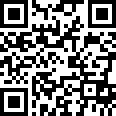
Privacy statement: Your privacy is very important to Us. Our company promises not to disclose your personal information to any external company with out your explicit permission.
2022-03-15
Twist drill is a tool used to drill round holes of workpiece by rotating cutting of its relative fixed axis. Because of its capacity chip groove into spiral shape and shape like hemp and named. Spiral grooves have 2, 3 or more grooves, but 2 grooves are the most common. Twist drill can be clamped on manual, electric hand-held drilling tools or drilling machines, milling machines, lathes and machining centers. Drill material is usually high - speed tool steel or carbide.
Standard twist drill. Twist drill is composed of shank, neck and working part.
(1) Spiral Angle β Spiral Angle is the Angle between the most round spiral line on the spiral groove of the bit and the axis of the bit after it expands into a straight line. As the lead of each point on the spiral groove is the same, so the spiral Angle at different diameters of the Drill Bit is different, the spiral Angle at the outer diameter is the largest, the closer to the center of the spiral Angle is smaller. When the screw Angle increases, the rake Angle increases, which is beneficial to chip removal, but the bit stiffness decreases. The screw Angle of standard twist drill is 18° ~ 38°. For the drill with smaller diameter, the screw Angle should be smaller to ensure the stiffness of the drill.
(2) rake Angle γOm [ Because the twist drill rake surface is helical, the rake Angle at each point on the main cutting edge is different. From the outer circle to the center, the rake Angle gradually decreases. The rake Angle at the tip is about 30°, and the rake Angle near the cross edge is about -30°.
(3) after the Angle alpha Om the twist drill master choose fixed point of cutting edge Angle, by that point in the column section after the feed Angle alpha Om. Column section is the main cutting edge selected point m, and a bit axis parallel to the line, the line formed by the rotating drill axis cylinder. Alpha Om also changes along the cutting edge, the closer it gets to the center, the greater the alpha Om. The back Angle α at the twist drill's outer circle is usually 8° ~ 10°, and the back Angle at the cross edge is 20° ~ 25°. This can compensate for the effect of the actual working back Angle at each point on the main cutting edge decreased due to the axial feed movement of the bit, and can adapt to the change of the front Angle.
(4) Main deflection Angle κ RM The main deflection Angle is the included Angle between the tangent line of the selected point M of the main cutting edge and the feed direction on the base plane. The base plane of the twist drill is the plane containing the drill axis past the selected point of the main cutting edge. Because the main cutting edge of the drill does not pass the axis line, the base plane of each point on the main cutting edge is different, and the main Angle of each point is also different. When the vertex Angle is ground out, the main declination Angle of each point is also determined. The main declivity Angle and the vertical Angle are two different concepts.
(5) Front Angle 2φ front Angle is the included Angle of the two main cutting edges projected on the plane parallel to it. The smaller edge Angle is easy to cut into the workpiece, the axial resistance is small, and the cutting edge working length increases, the cutting layer nominal thickness decreases, is conducive to heat dissipation and improve tool durability; If the front Angle is too small, the bit strength is weakened, deformation is increased, torque is increased, and the bit is easy to break. Therefore, according to the strength and hardness of the workpiece material to grind a reasonable front Angle, the front Angle of the standard twist drill 2φ 118°
The bevel Angle of the bevel edge is the included Angle projected between the main cutting edge and the bevel edge on the plane perpendicular to the bit axis. When the twist drill tool surface is ground out, the ψ is formed naturally. As can be seen from FIG. 3-5, when the bevel Angle of the transverse edge is increased, the length of the transverse edge and the axial resistance decrease. Standard twist drill edge bevel is about 50° ~ 55°.
Share to:
Send Inquiry

Mr. alex
Tel:+86-0519-83150991
Fax:
Mobile Phone:+8613815045320
Email:alex@bomitools.com
Address:changzhou xinbei, Changzhou, Jiangsu
Related Products List
Mobile Site


Privacy statement: Your privacy is very important to Us. Our company promises not to disclose your personal information to any external company with out your explicit permission.

Fill in more information so that we can get in touch with you faster
Privacy statement: Your privacy is very important to Us. Our company promises not to disclose your personal information to any external company with out your explicit permission.